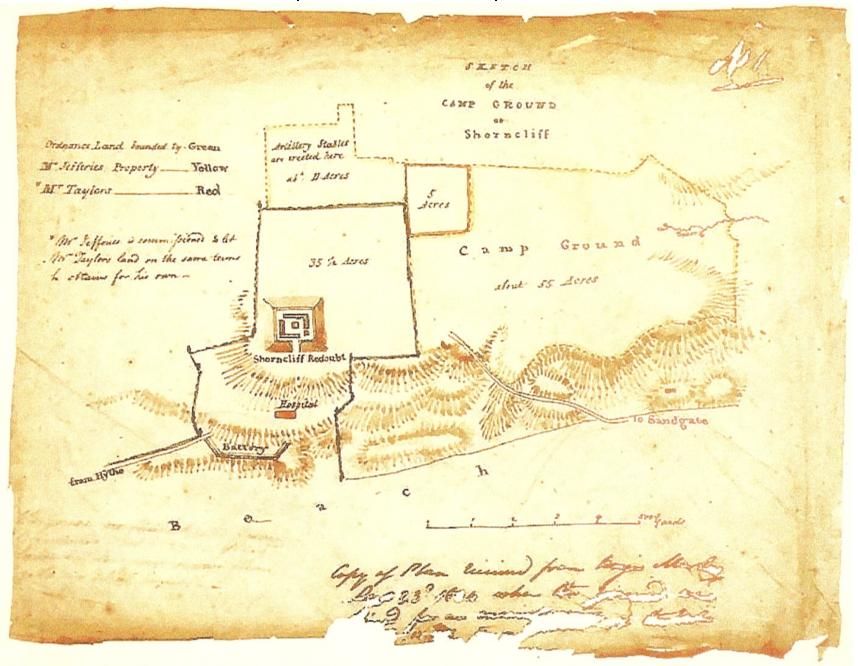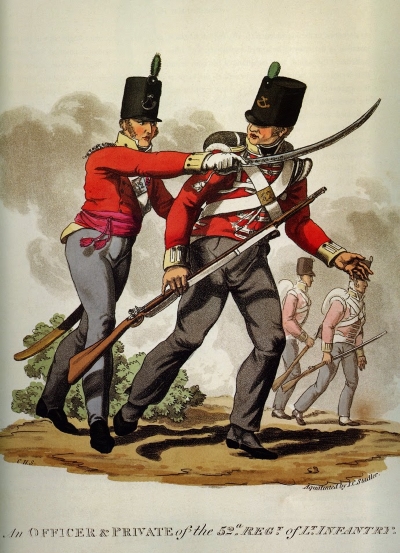|
Sir Kenneth Douglas, 1st Baronet
Lieutenant-General Sir Kenneth MacKenzie Douglas, 1st Baronet (1754–1833), born Kenneth MacKenzie, was the first baronet of the Douglas of Glenbervie, Kincardine Baronetcy (second creation). He was created baronet in 1831. Born as Kenneth MacKenzie in Dundee in 1754, his father was Kenneth Mackenzie, of Kilcoy, Ross-shire, and his mother Janet, a daughter of Sir Robert Douglas, 6th Baronet of Glenbervie (first creation).David Gates‘Mackenzie, Kenneth (later Sir Kenneth Douglas, first baronet) (1754–1833)’ ''Oxford Dictionary of National Biography'', Oxford University Press, 2004. Retrieved 19 June 2008 He was commissioned as an ensign in the 33rd Foot in 1767, and was promoted lieutenant in 1775. MacKenzie transferred to the 14th Foot in 1783. He served in Guernsey, the West Indies, Flanders, Gibraltar, and Egypt. He joined the 90th Foot in 1794, when, under Thomas Graham, (later Lord Lynedoch), he trained light company troops. On the death of Lieutenant-Colo ... [...More Info...] [...Related Items...] OR: [Wikipedia] [Google] [Baidu] |
44th Foot
The 44th Regiment of Foot was an infantry regiment in the British Army, raised in 1741. Under the Childers Reforms it amalgamated with the 56th (West Essex) Regiment of Foot to form the Essex Regiment in 1881. History Early history The regiment was raised by Colonel James Long as James Long's Regiment of Foot in 1741. The regiment saw active service at the Battle of Prestonpans in September 1745 during the Jacobite rising. Ranked as the 55th Regiment of the Line in 1747, the regiment was renamed the 44th Regiment of Foot in 1751. It embarked for North America in January 1755 for service in the French and Indian War and took part in the Battle of the Monongahela where Colonel Sir Peter Halkett was killed while commanding the regiment. The regiment went on to fight at the Battle of Carillon in July 1758, the Battle of Fort Niagara in July 1759 and finally the Montreal Campaign in July to September 1760 before returning home in 1765. The regiment returned to North America landin ... [...More Info...] [...Related Items...] OR: [Wikipedia] [Google] [Baidu] |
Lord Frederick Bentinck
Major-General Lord Frederick Cavendish-Bentinck (2 November 1781 – 10 February 1828) known as Lord Frederick Bentinck was a British soldier and politician. The youngest child and fourth son of William Cavendish-Bentinck, 3rd Duke of Portland and Lady Dorothy Cavendish, Cavendish-Bentinck attended Westminster School before joining the army. Military career Entering the British army in 1797 as an Ensign in the 32rd Regiment of Foot Bentinck then purchased promotion to Lieutenant and subsequently Captain in the 24th Light Dragoons. Placed on half-pay Bentinck was attached to the combined Russian and Austrian army in Italy during the War of the Second Coalition during which period he participated in the battles of Novi (1799) and Marengo (1800) as well as being present at the Siege of Alexandria (1801). Bentinck returned to full duty with the British army as a Captain in the 52nd Foot (the 24th Light Dragoons having been disbanded). In March 1804 he purchased a promotion ... [...More Info...] [...Related Items...] OR: [Wikipedia] [Google] [Baidu] |
Osprey Publishing
Osprey Publishing is a British, Oxford-based, publishing company specializing in military history. Predominantly an illustrated publisher, many of their books contain full-colour artwork plates, maps and photographs, and the company produces over a dozen ongoing series, each focusing on a specific aspect of the history of warfare. Osprey has published over 2,300 books. They are best known for their ''Men-at-Arms'' series, running to over 500 titles, with each book dedicated to a specific historical army or military unit. Osprey is an imprint of Bloomsbury Publishing. History In the 1960s, the Brooke Bond Tea Company began including a series of military aircraft cards with packages of their tea. The cards proved popular, and the artist Dick Ward proposed the idea of publishing illustrated books about military aircraft. The idea was approved and a small subsidiary company called Osprey was formed in 1968. The company’s first book, ''North American P-51D Mustang in USAAF-USAF Ser ... [...More Info...] [...Related Items...] OR: [Wikipedia] [Google] [Baidu] |
Citadel Of Antwerp
Antwerp Citadel ( es, Castillo de Amberes, nl, Kasteel van Antwerpen) was a pentagonal bastion fort built to defend and dominate the city of Antwerp in the early stages of the Dutch Revolt. It has been described as "doubtlesse the most matchlesse piece of modern Fortification in the World" and as "one of the most studied urban installations of the sixteenth century". History The citadel was designed by the Italian engineer Francesco Paciotto and built on the orders of the Duke of Alva. Initial construction was completed in 1572. After the Sack of Antwerp (1576) the citizens partially demolished the fortification, but it was reconstructed after the Fall of Antwerp (1585). The citadel saw action towards the end of the Napoleonic Wars, when it was defended by diehard Bonapartists. The Siege of Antwerp (1814) continued for a month after Napoleon's abdication. After the Belgian Revolution of 1830, Dutch forces remained in control of the citadel until the Siege of Antwerp (1832). Demo ... [...More Info...] [...Related Items...] OR: [Wikipedia] [Google] [Baidu] |
Hundred Days
The Hundred Days (french: les Cent-Jours ), also known as the War of the Seventh Coalition, marked the period between Napoleon's return from eleven months of exile on the island of Elba to Paris on20 March 1815 and the second restoration of King Louis XVIII on 8 July 1815 (a period of 110 days). This period saw the War of the Seventh Coalition, and includes the Waterloo Campaign, the Neapolitan War as well as several other minor campaigns. The phrase ''les Cent Jours'' (the hundred days) was first used by the prefect of Paris, Gaspard, comte de Chabrol, in his speech welcoming the king back to Paris on 8 July. Napoleon returned while the Congress of Vienna was sitting. On 13March, seven days before Napoleon reached Paris, the powers at the Congress of Vienna declared him an outlaw, and on 25March Austria, Prussia, Russia and the United Kingdom, the four Great Powers and key members of the Seventh Coalition, bound themselves to put 150,000 men each into the field to end ... [...More Info...] [...Related Items...] OR: [Wikipedia] [Google] [Baidu] |
Thomas Graham, 1st Baron Lynedoch
Thomas Graham, 1st Baron Lynedoch (19 October 174818 December 1843) was a Scottish aristocrat, politician and British Army officer. After his education at Oxford, he inherited a substantial estate in Scotland, married and settled down to a quiet career as a landowning gentleman. However, with the death of his wife, when he was aged 42, he immersed himself in a military (and later political) career, during the French Revolutionary Wars and the Napoleonic Wars. Taylor described Graham as "tall, square-shouldered, and erect, his limbs sinewy and remarkably strong. His complexion was dark, with full eyebrows, firm-set lips, and an open, benevolent air. His manners and address were frank, simple, and polished". Early life and education Thomas Graham was the third and only surviving son of Thomas Græme of Balgowan, in Perthshire and Lady Christian Hope, a daughter of the first Earl of Hopetoun. He was born in 1748, and was educated at home by the Reverend Fraser, minister of Moneyd ... [...More Info...] [...Related Items...] OR: [Wikipedia] [Google] [Baidu] |
History Of British Light Infantry
The history of British light infantry goes back to the early days of the British Army, when irregular troops and mercenaries added skills in light infantry fighting. From the beginning of the nineteenth century, the Army dedicated some line regiments as specific light infantry troops, were trained under the Shorncliffe System devised by Sir John Moore and Sir Kenneth MacKenzie Douglas. The light infantry had the nickname "light bobs" first used during the American Wars of Independence, and commonly applied to the Light Division during the Napoleonic wars. Origins of British light infantry Until the beginning of the 19th century, the British Army relied on irregulars and mercenaries to provide most of its light infantry.Chappell, p. 6 The light infantry performed with merit during the Seven Years' War (or the French and Indian War), particularly the battle of the Quebec when they scaled cliffs and engaged French forces on the Plains of Abraham above. In the Seven Years' War and ... [...More Info...] [...Related Items...] OR: [Wikipedia] [Google] [Baidu] |
Brigade
A brigade is a major tactical military formation that typically comprises three to six battalions plus supporting elements. It is roughly equivalent to an enlarged or reinforced regiment. Two or more brigades may constitute a division. Brigades formed into divisions are usually infantry or armored (sometimes referred to as combined arms brigades). In addition to combat units, they may include combat support units or sub-units, such as artillery and engineers, and logistic units. Historically, such brigades have sometimes been called brigade-groups. On operations, a brigade may comprise both organic elements and attached elements, including some temporarily attached for a specific task. Brigades may also be specialized and comprise battalions of a single branch, for example cavalry, mechanized, armored, artillery, air defence, aviation, engineers, signals or logistic. Some brigades are classified as independent or separate and operate independently from the traditional divi ... [...More Info...] [...Related Items...] OR: [Wikipedia] [Google] [Baidu] |
Shorncliffe Army Camp
Shorncliffe Army Camp is a large military camp near Cheriton in Kent. Established in 1794, it later served as a staging post for troops destined for the Western Front during the First World War. History The camp was established in 1794 when the British Army bought over 229 acres of land at Shorncliffe; it was then extended in 1796 and 1806. It was at Shorncliffe that in 1803 Sir John Moore trained the Light Division that fought under the Duke of Wellington in the Napoleonic Wars. In 1890 hutted camp facilities were replaced with permanent facilities known as Moore Barracks, Napier Barracks, Ross Barracks, Royal Engineers Barracks (later known as Burgoyne Barracks) and Somerset Barracks. Risborough Barracks were established by 1910. Shorncliffe was used as a staging post for troops destined for the Western Front during the First World War and in April 1915 a Canadian Training Division was formed there. The Canadian Army Medical Corps had general hospitals based at Shorncliff ... [...More Info...] [...Related Items...] OR: [Wikipedia] [Google] [Baidu] |
52nd (Oxfordshire) Regiment Of Foot
The 52nd (Oxfordshire) Regiment of Foot was a light infantry regiment of the British Army throughout much of the 18th and 19th centuries. The regiment first saw active service during the American War of Independence, and were posted to India during the Anglo-Mysore Wars. During the Napoleonic Wars, the 52nd were part of the Light Division, and were present at most major battles of the Peninsula campaign, becoming one of the most celebrated regiments, described by Sir William Napier as "a regiment never surpassed in arms since arms were first borne by men". They had the largest British battalion at Waterloo, 1815, where they formed part of the final charge against Napoleon's Imperial Guard. They were also involved in various campaigns in India. The regiment was raised as a line regiment in 1755 and numbered as the "54th Foot"; they were renumbered as the "52nd Regiment of Foot" in 1757. In 1781, the regional designation "52nd (Oxfordshire) Regiment of Foot" was given and in 18 ... [...More Info...] [...Related Items...] OR: [Wikipedia] [Google] [Baidu] |



.jpg)


